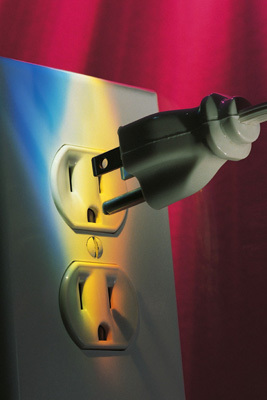by
Joan Trombetti, Writer | October 01, 2008

Power outages
and medical devices
When the remnants of Hurricane Ike hit Ohio thousands lost electricity and the ability to power their medical devices.
Weeks later, power is now being restored, but for the thousands of residents who depend on electricity to power necessary medical devices, the ordeal was a challenge. Many drove or walked in search of an outside outlet, while others depended on the Red Cross and equipment manufacturers for support.
There are steps that can be taken to avoid problems when the power goes out.



Ad Statistics
Times Displayed: 1943
Times Visited: 9 Keep biomedical devices ready to go, so care teams can be ready to care for patients. GE HealthCare’s ReadySee™ helps overcome frustrations due to lack of network and device visibility, manual troubleshooting, and downtime.
Everyone should have an alternative source of power. Often times, there are instructions about backup power options with a device. Or, a user should contact the manufacturer directly about backup power options. Users can also call the electric company to find out what type of backup power plan should be used.
Make sure that all equipment is regularly checked for backup or alternative power to ensure it will function during an emergency, and make sure others know how the backup system operates. It is wise to label equipment with name, address and phone number and an instruction card. Always keep copies of lists of serial and model numbers of devices, as well as instructions, in a waterproof container.
If life-support devices are used, contact power and water companies about the use, so that it will be on record in case of a disaster. This should provide "priority reconnection service" for power. Alert the fire department about life-support dependency. If dialysis or medical treatments are part of a plan, find out where treatment sites are available in case of an emergency.
If oxygen is a daily requirement, check to determine if a reduced flow rate to extend the life of the system is available. Reduced flow numbers should be recorded on oxygen equipment.
Have a plan for how to recharge batteries when the electricity is down. Alternative methods of charging batteries could include connecting jumper cables to a vehicle battery, using a converter that plugs into a vehicle's cigarette lighter, or substituting a vehicle battery for a wheelchair battery. Also store manual lightweight wheelchairs for emergency use.
After the power is restored check the settings on medical devices to make sure they are correct. They often are in a reset or default mode when power is out.
Having a support team is vital in an emergency. Work with people who are reliable and have the physical and emotional strength to help in an emergency.
(Tips provided by June Isaacson Kailes, Emergency Safety Tips for People Who Use Electricity and Battery-Dependent Devices, 2006. Published and distributed by the Frank D. Lanterman Regional Center and June Isaacson Kailes, Disability Policy Consultant; e-mail evac(at)westernu.edu.)
Back to HCB News

